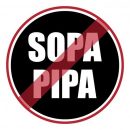
Most people are aware that mercury is hazardous to health, but if they don’t know that amalgam fillings contain mercury, then they can’t object to it in the first place.
Amalgam, typically referred to as “silver fillings,” is a consumer fraud perpetuated by those who, through the years, have stood to gain from its continued sale.
This includes the American Dental Association Health Foundation, the non-profit research arm of the American Dental Association (ADA), which held patents on two (now expired) amalgam formulations (patent numbers: US04078921 and US04018600).
By referring to the color of the compound rather than its content, consumers have been kept in the dark about the fact that they’re placing a known neurotoxin — mercury — into their teeth.
As noted in a 2010 scientific review1 on mercury exposure and children’s health, there is no known safe level of exposure for mercury.
Ideally, exposure should be zero, so those who insist amalgams — which are 50 percent mercury — pose no threat to health are not acting in an ethical or responsible manner.
Amalgams Release Mercury Vapors
Dental amalgams readily release mercury vapors whenever you chew or brush your teeth, which pass through your cell membranes, across your blood-brain barrier, and into your central nervous system.
Effects can be psychological, neurological, and/or immunological.
One 2012 study2 evaluating the effects of mercury on cognition in adults found that mild impairment was evident at blood mercury levels of 5 to 15 µg/L. Above 15 µg/L, cognition was significantly impaired.
In the United States, most dental practices are prohibited from disposing amalgam waste down the drain.
The World Health Organization recommends a global phase out of dental mercury as in the WHO’s 2009 report on “Future Use of Materials For Dental Restorations”.
It is the position of national health agencies in the European Union, Sweden, and Norway that amalgam is dangerous. The European Union has banned mercury amalgam fillings for all children and pregnant women with the plan to phase it out completely. Some countries are already at record low levels: amalgam use is 0% in Sweden, 3% in Finland, 5% in Denmark and less than 10% in the Netherlands. Several other countries such as Germany and the United Kingdom have restricted or warned against amalgam use in children and pregnant women. The Food and Drug Administration does not recommend amalgam fillings for children below the age of 6.
It is the position of the FDI World Dental Federation as well as numerous dental associations and dental public health agencies worldwide] that amalgam restorations are safe and effective. Numerous other organizations have also publicly declared the safety and effectiveness of amalgam. These include the Mayo clinic, the U.S. Food and Drug Administration (FDA), Health Canada, Alzheimer’s Association, American Academy of Pediatrics, Autism Society of America, U.S. Environmental Protection Agency,] National Multiple Sclerosis Society, New England Journal of Medicine, International Journal of Dentistry, National Council Against Health Fraud, The National Institute of Dental and Craniofacial Research NIDCR, American Cancer Society, Lupus Foundation of America, the American College of Medical Toxicology, the American Academy of Clinical Toxicology, Consumer Reports Prevention, and WebMD.



